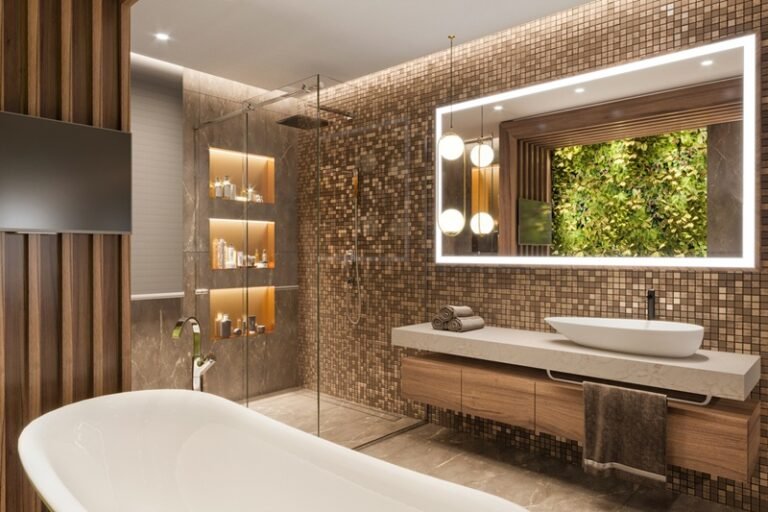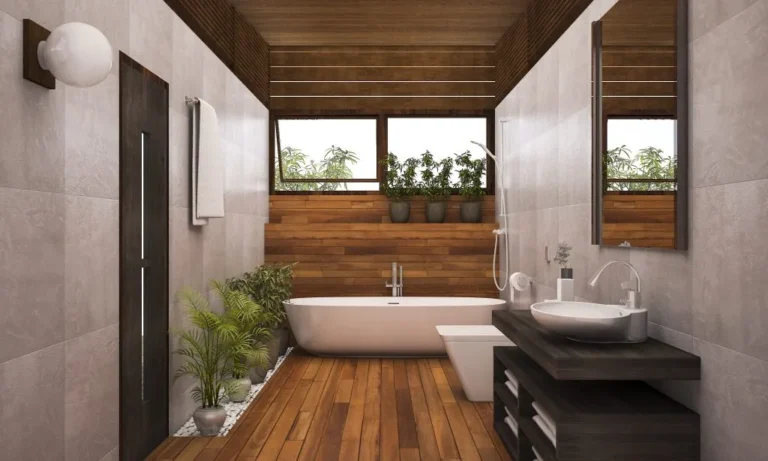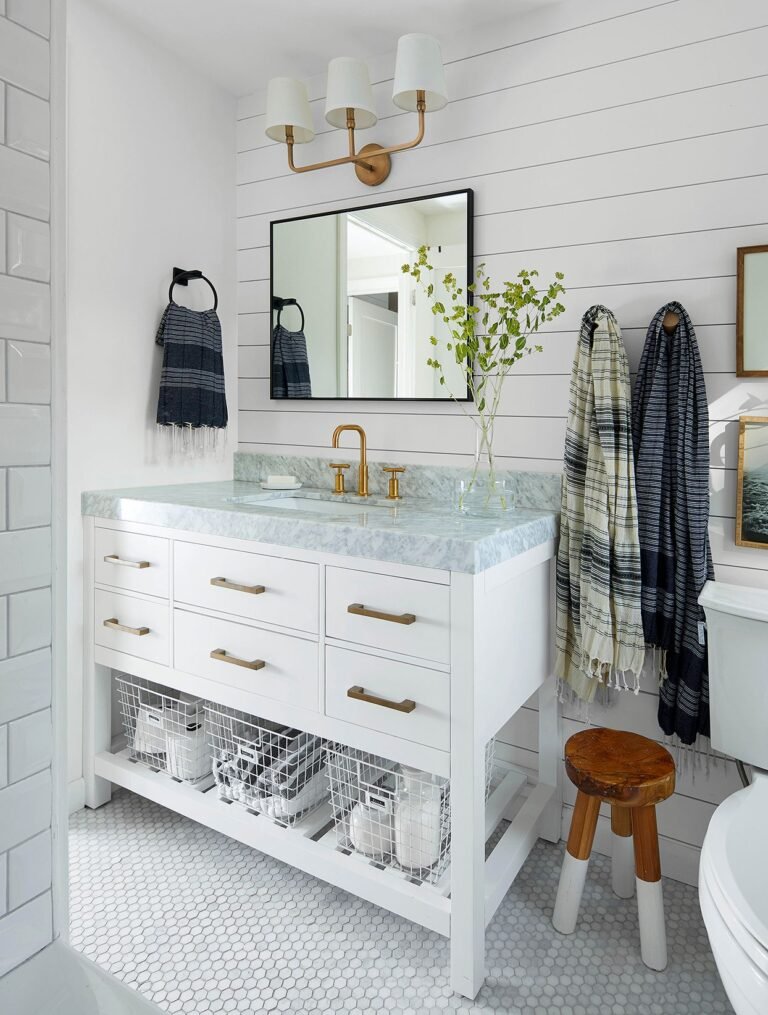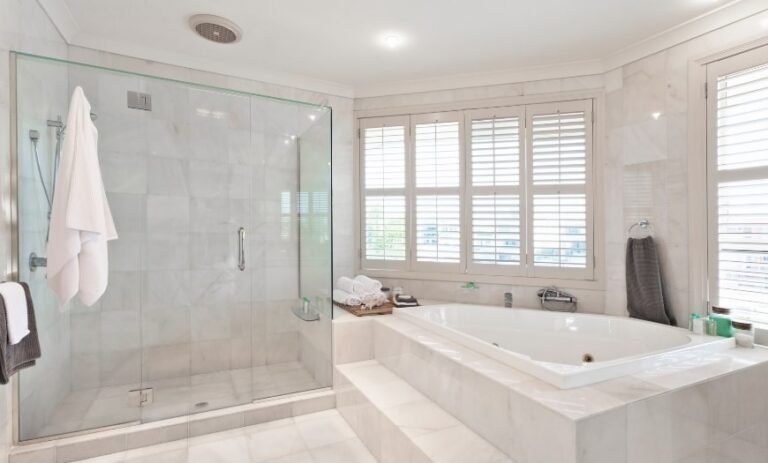How to Choose Bathroom Tiles
Choosing bathroom tiles might seem easy at first, but when you start looking around, the options can be overwhelming. Shapes, colors, textures, and sizes all come into play, and each choice changes how your bathroom will look and feel. This guide walks you through the process step by step, helping you make smart choices without stress.
Why Bathroom Tiles Matter
Tiles do more than just cover walls and floors. They protect surfaces from water, add style, and set the tone for the whole room. A bathroom with dark stone tiles feels very different from one with glossy white squares. Your choice affects mood, comfort, and even how easy the space is to clean.
Think About Your Space
Bathrooms come in all shapes and sizes. A small powder room has different needs than a large family bathroom. Before looking at colors or styles, consider the size of your room, how much light it gets, and who will be using it.
- Small bathrooms often look larger with light colors and bigger tiles.
- Large bathrooms can handle bold patterns or darker shades without feeling cramped.
- Natural light makes colors look brighter, while artificial light can change tones.

Decide Where You’ll Use the Tiles
Not all tiles are made for the same job. Floor tiles need to be tougher and less slippery than wall tiles. Shower areas need tiles that can handle constant water. Around the sink, you might want something that resists stains and is easy to wipe down.
Common Areas for Tiles
- Floors: Look for durability and slip resistance.
- Walls: Lighter weight options work well here.
- Showers: Choose non-porous, water-resistant types.
- Backsplashes: Decorative tiles can add personality.
Types of Bathroom Tiles
There are many materials to pick from, and each has pros and cons. Here are the most common options:
Ceramic
Ceramic tiles are affordable, easy to clean, and come in endless styles. They work well on both walls and floors, though not all are suitable for heavy traffic.
Porcelain
Porcelain is stronger than ceramic and more water-resistant. It can mimic stone, wood, or concrete. Because of its strength, it’s great for floors and showers.
Natural Stone
Marble, granite, slate, and travertine bring a natural, unique look. They need sealing to stay protected from stains and water. Stone can be pricey but gives a timeless style.
Glass
Glass tiles reflect light and brighten a space. They are often used in mosaics or as accents. They work best on walls and backsplashes.
Vinyl
Vinyl tiles are budget-friendly and soft underfoot. They’re water-resistant but don’t always have the long life of stone or porcelain.
Cement
Cement tiles can add bold patterns and color. They are porous, so they need sealing, but they can create a striking look.
Choosing the Right Size
Tile size changes how a bathroom looks. Larger tiles mean fewer grout lines, which can make the room feel bigger and cleaner. Small tiles can add texture and detail but may feel busy in a tiny space.
- Large tiles work well in open bathrooms.
- Medium tiles suit most standard spaces.
- Small tiles are often used in shower floors or as accents.
Playing With Color
Color is one of the biggest decisions. Lighter shades make a room feel larger and brighter. Dark tones create a cozy or dramatic look. Neutral colors stay timeless, while bold shades make a statement.
Popular Choices
- White and gray: Clean, modern, and flexible.
- Earth tones: Warm and calming.
- Bold colors: Add energy but can feel overwhelming if overused.
Texture and Finish
Tiles don’t just vary in color. The finish changes how they look and feel.
- Glossy: Reflects light, making small spaces brighter but shows smudges easily.
- Matte: Softer look, hides marks better, and feels more natural.
- Textured: Adds grip for floors and interest for walls.
Patterns and Layouts
How you arrange tiles changes the whole design. Even plain tiles look stylish with creative layouts.
Common Layouts
- Straight lay: Simple grid pattern.
- Diagonal: Angled look adds movement.
- Herringbone: Classic zigzag style.
- Basketweave: Old-fashioned and detailed.
Grout Choices
People often overlook grout, but it makes a big difference. Grout can blend with tiles or create contrast.
- Matching grout: Makes tiles look seamless.
- Contrasting grout: Highlights the pattern and shape.
- Dark grout: Hides stains better on floors.

Safety and Comfort
Bathrooms can get slippery, so safety matters. Look for slip-resistant surfaces, especially on floors and in showers. Heated floors can also add comfort if you live in a cold climate.
Maintenance and Cleaning
Some tiles are easy to care for, while others need more attention. Porcelain and ceramic are simple to clean. Natural stone may need resealing every year. If you want low effort, avoid materials that stain or scratch easily.
Setting a Budget
Tiles come at many price points. You’ll also need to factor in installation costs. A budget helps narrow choices.
Ways to Save
- Mix expensive accent tiles with cheaper basics.
- Use bold designs in small areas.
- Choose standard sizes to cut labor costs.
Mistakes to Avoid
- Picking floor tiles without checking slip resistance.
- Choosing tiles too big for a small room.
- Forgetting about grout color until the last minute.
- Ignoring how light changes the look of tiles.
Trends in Bathroom Tiles
Design trends come and go, but some stick around longer.
- Large-format tiles: Sleek look with fewer lines.
- Natural looks: Stone, wood, and concrete styles.
- Geometric patterns: Shapes like hexagons or chevrons.
- Mixing finishes: Glossy and matte together.
A Step-by-Step Plan
Here’s a simple way to make your decision:
- Measure your bathroom.
- Decide on floor and wall areas to tile.
- Set your budget.
- Pick tile type (ceramic, porcelain, stone, etc.).
- Choose size and shape.
- Decide on color and finish.
- Pick a layout pattern.
- Choose grout color.
- Check samples in your bathroom with your lighting.
- Confirm slip resistance and durability.
Sample Comparison Table
| Tile Type | Best For | Pros | Cons |
|---|---|---|---|
| Ceramic | Walls & floors | Affordable, easy | Less durable |
| Porcelain | Floors, showers | Strong, water-resistant | Heavier, pricier |
| Stone | Floors, walls | Natural look | Needs sealing |
| Glass | Walls, accents | Brightens space | Slippery, fragile |
| Vinyl | Floors | Soft, cheap | Short lifespan |
| Cement | Walls, floors | Bold patterns | Needs sealing |
Final Thoughts
Choosing bathroom tiles takes time, but it doesn’t have to be stressful. Think about how you use the space, what mood you want to create, and how much care you’re willing to give the tiles. Start with function, add style, and balance your budget. The right choice will give you a bathroom that feels good every time you step inside.






